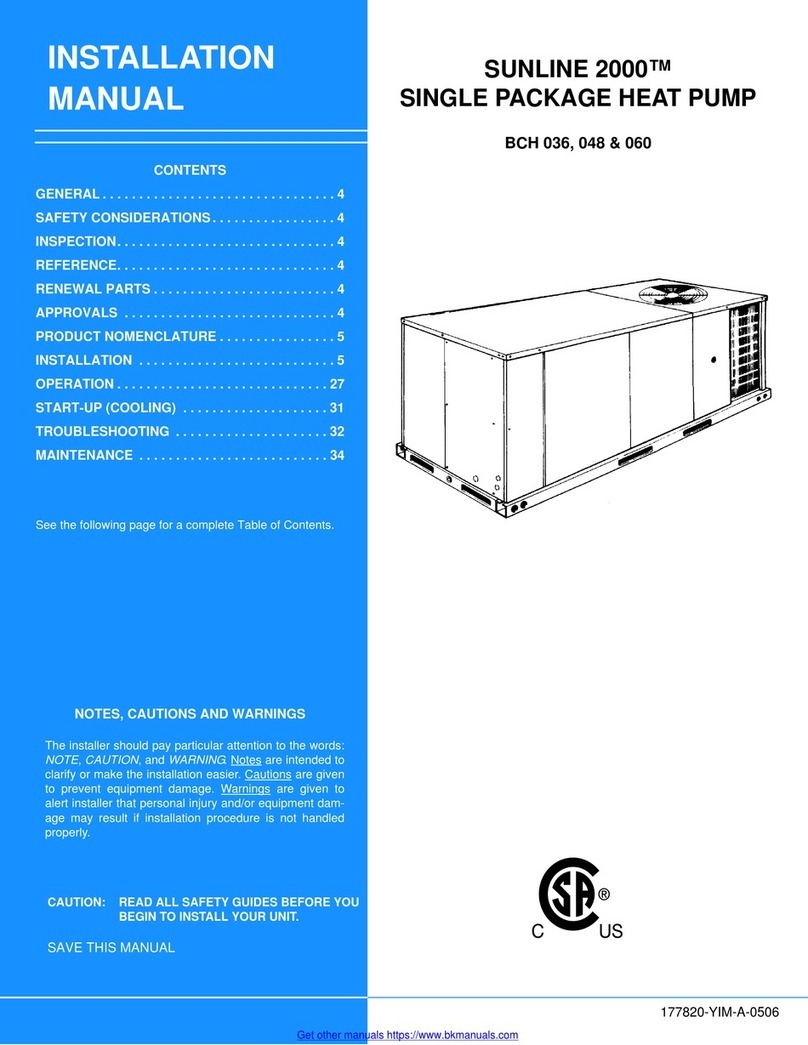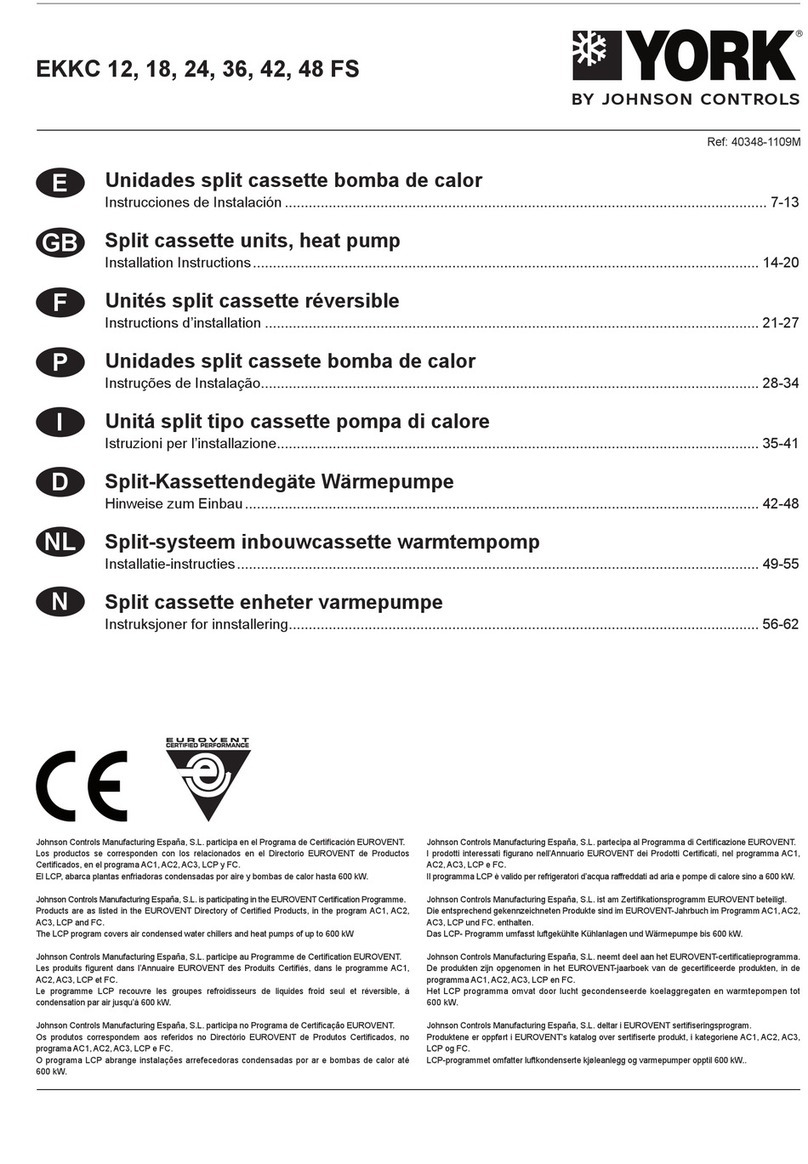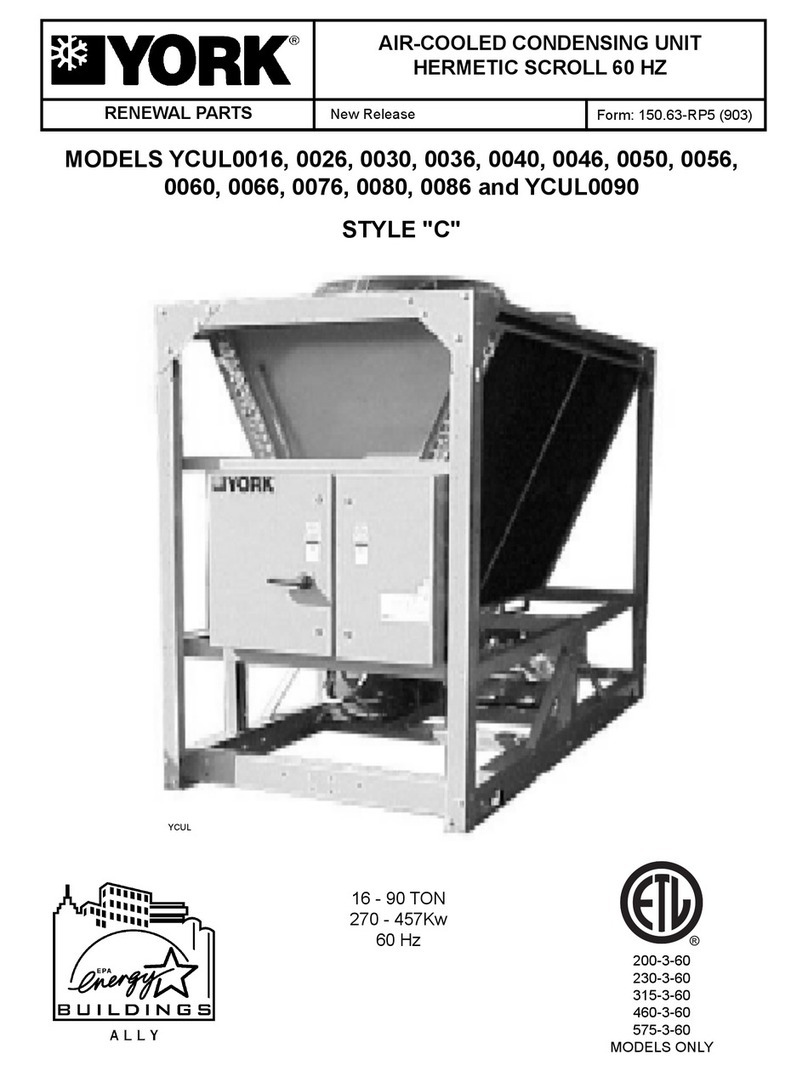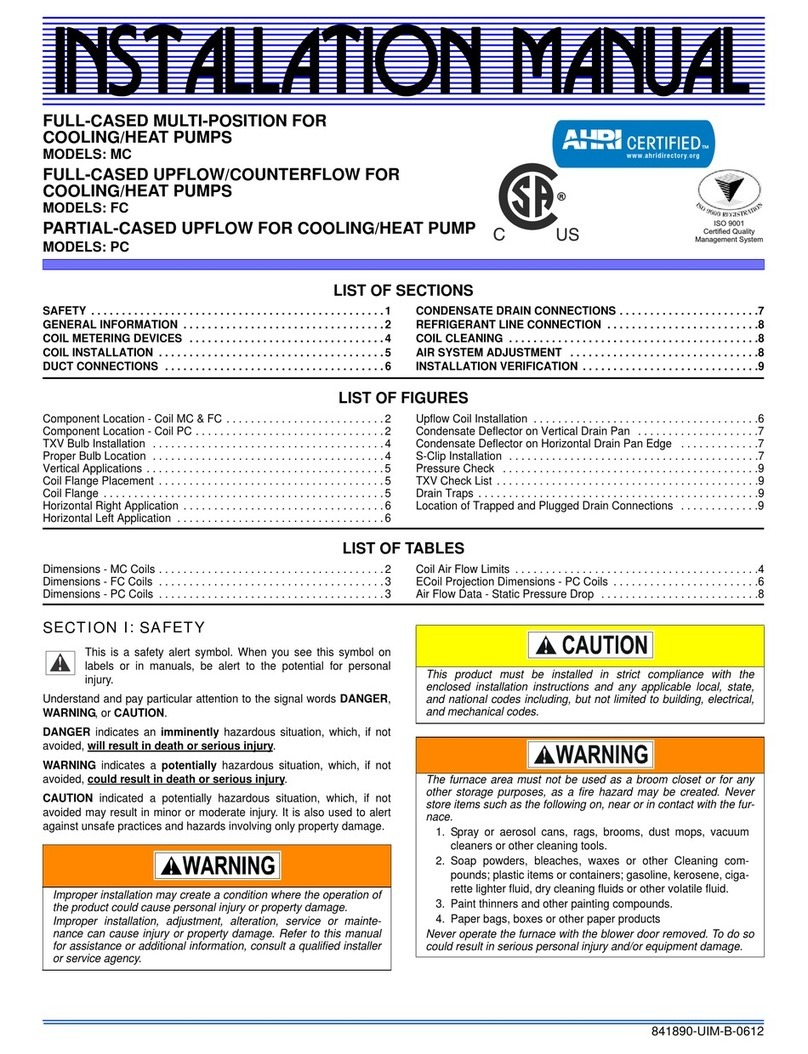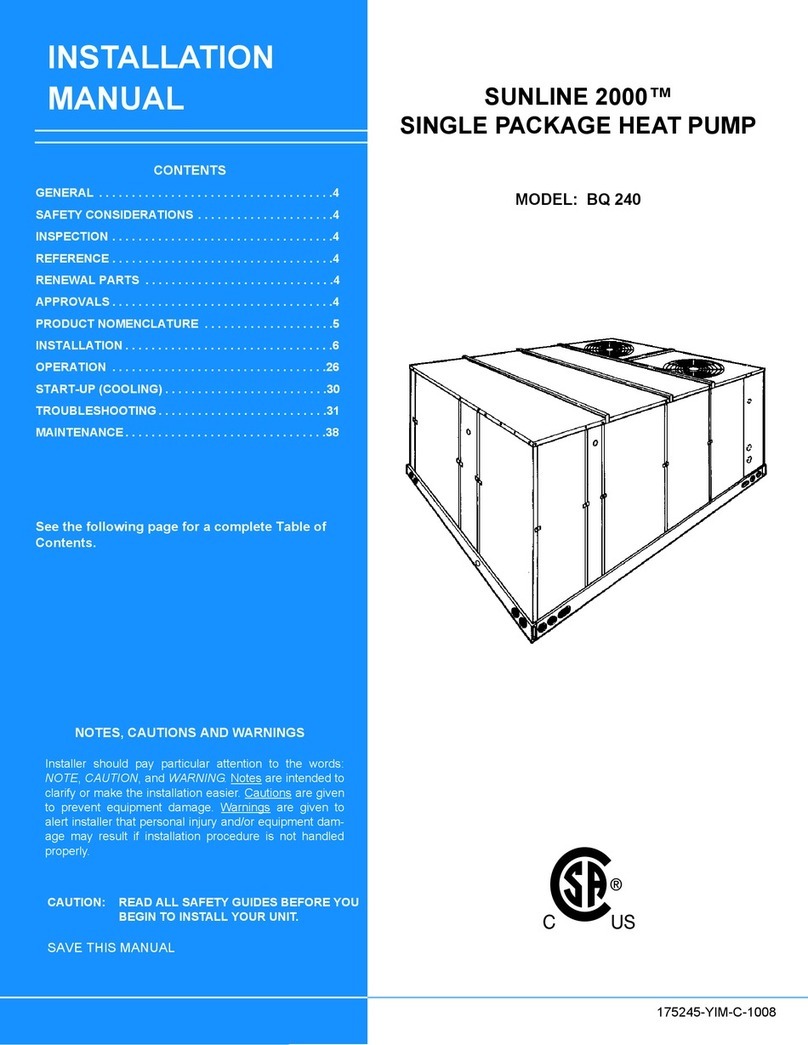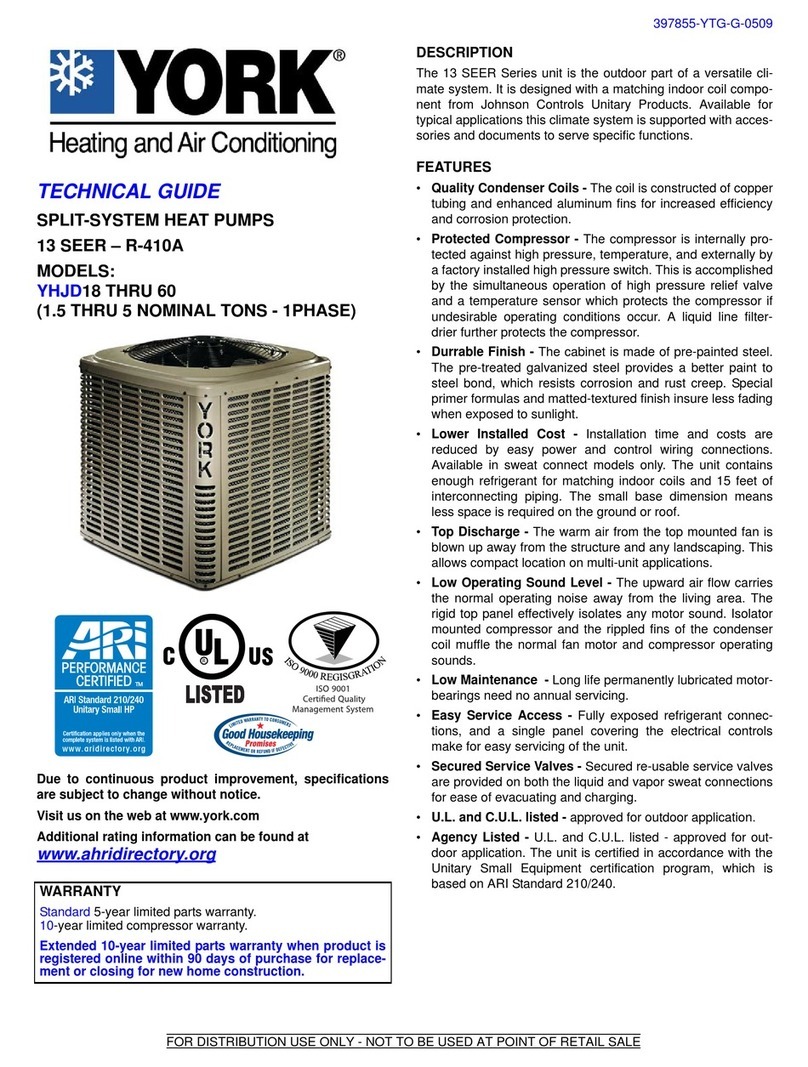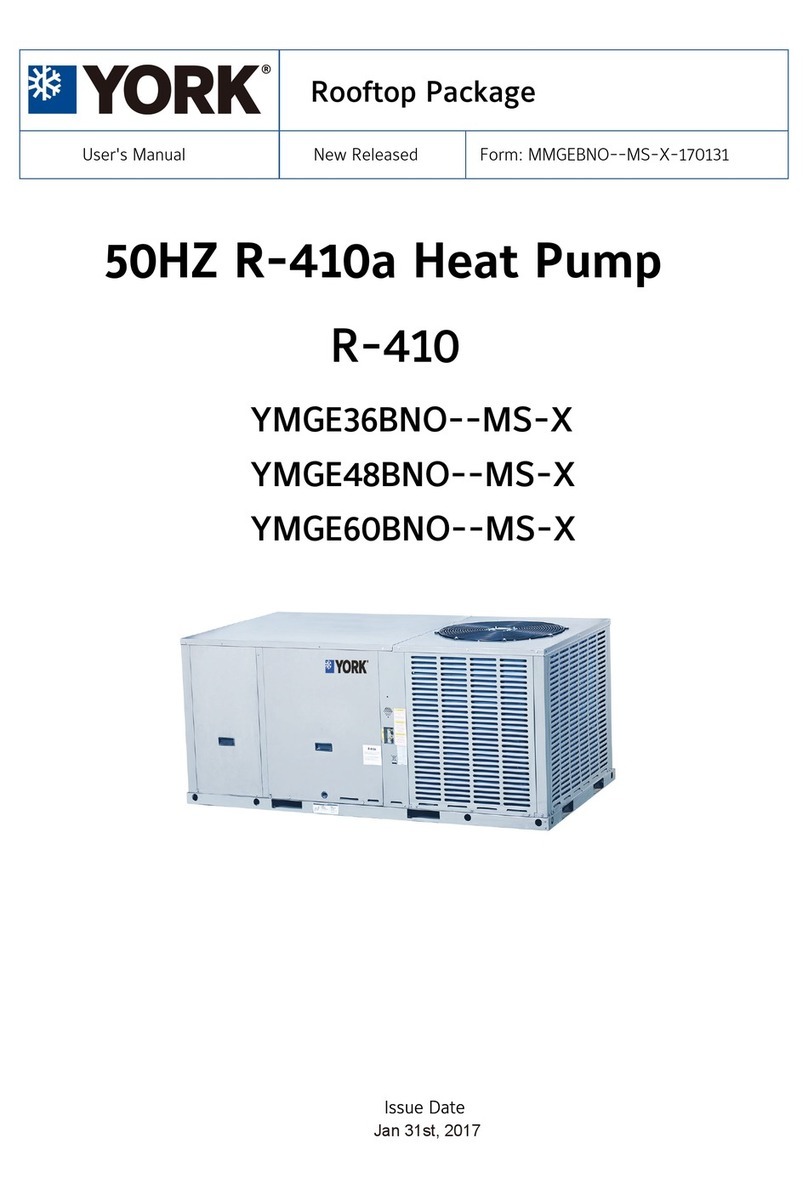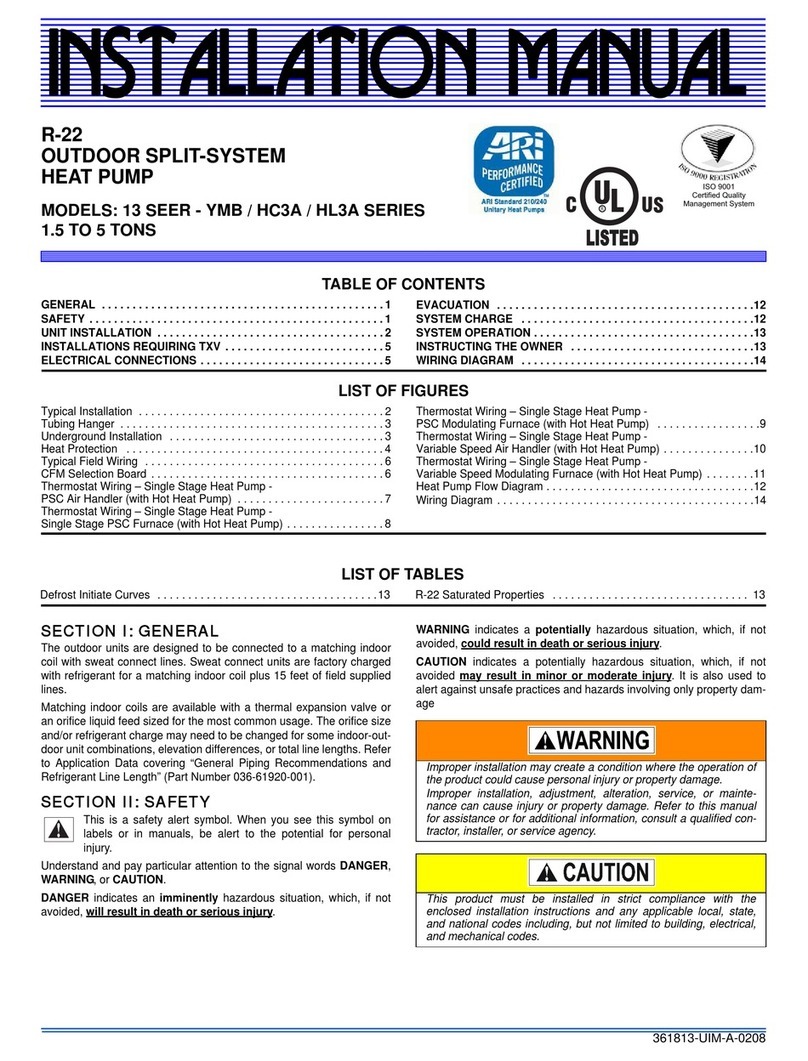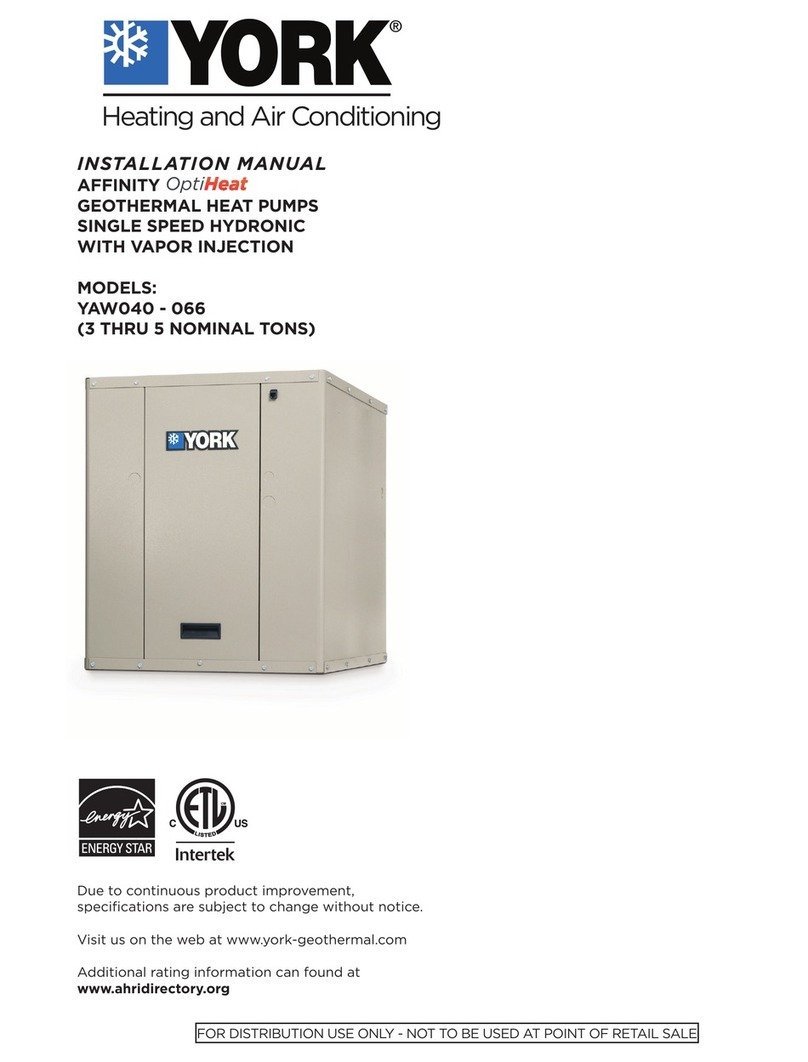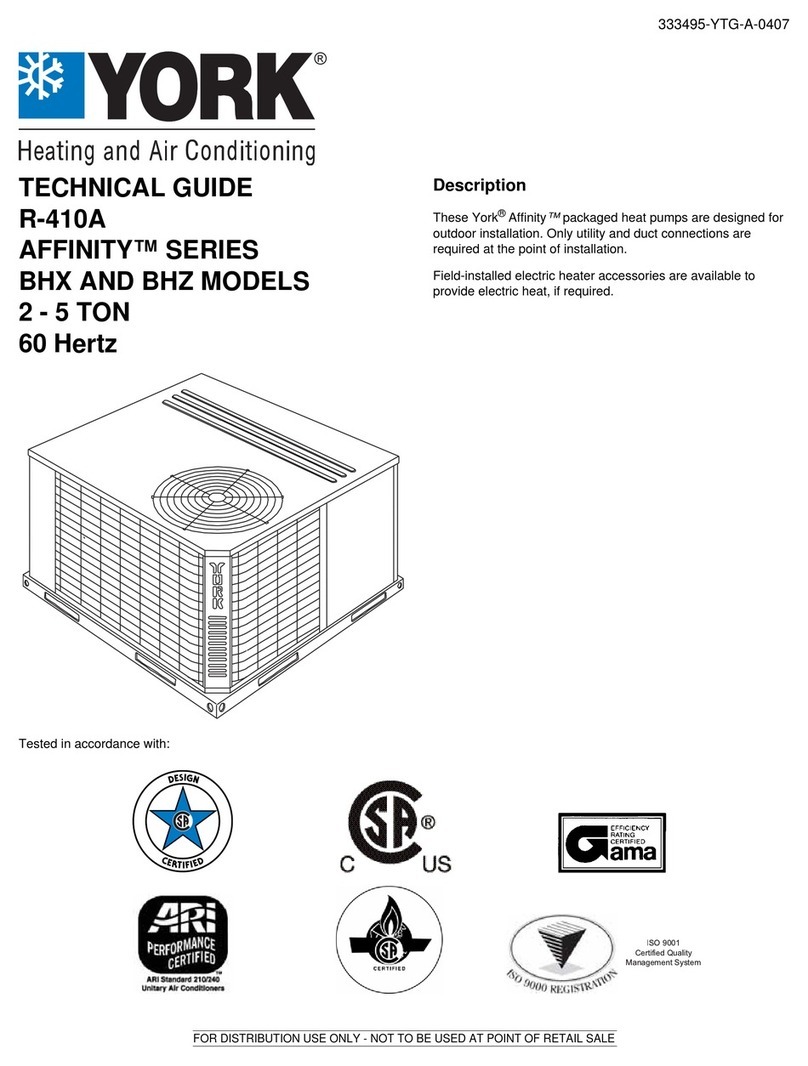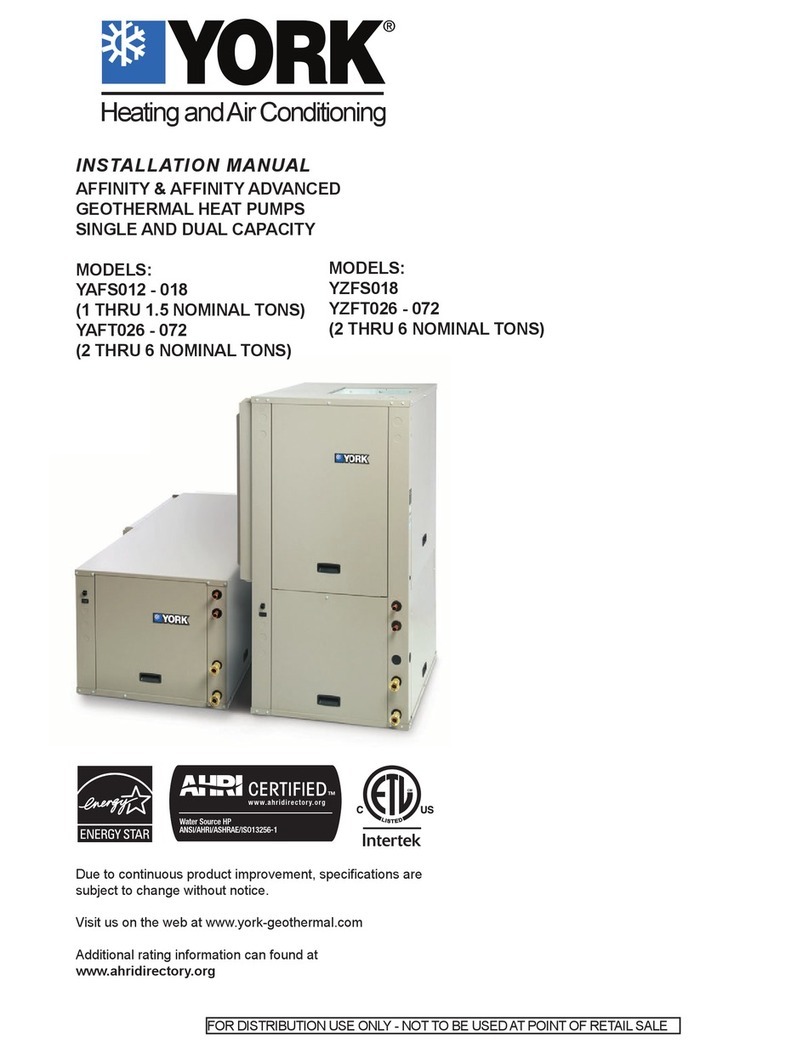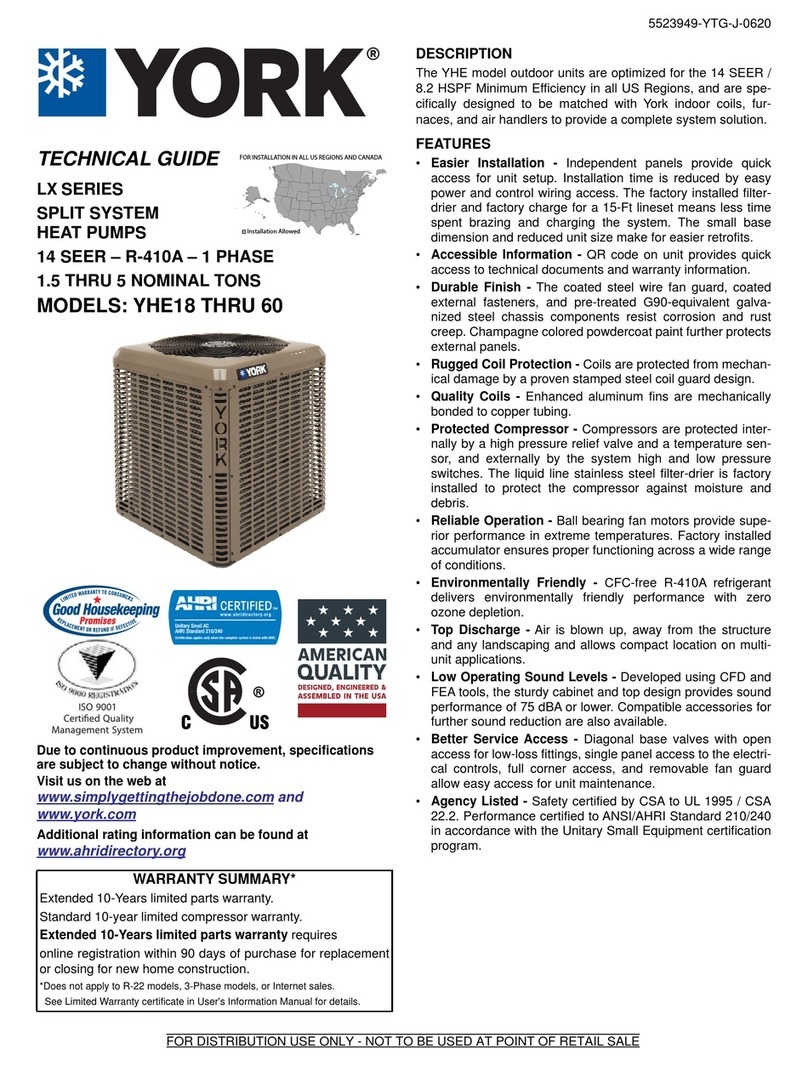
Subject to change without notice. Printed in U.S.A. 258919-UIM-B-0107
Copyright
©
by York International Corp. 2007. All rights reserved. Supersedes: 258919-UIM-A-0906
Unitary 5005 Norman
Product York OK
Group Drive 73069
DO NOT
use Teflon
TM
tape “pipe dope” or other sealants. The use of a
sealant may cause damage and premature failure of the drain pan.
NOTE:
If the coil is installed in a draw-thru application (modular air han-
dler) it is recommended to trap the primary and secondary drain line. If
the secondary drain line is not used it must be capped.
SECTION VI: REFRIGERANT LINE
SECTION VI: REFRIGERANT LINE SECTION VI: REFRIGERANT LINE
SECTION VI: REFRIGERANT LINE
CONNECTION
CONNECTIONCONNECTION
CONNECTION
Connect lines as follows:
NOTE:
Route the refrigerant lines to the coil in a manner that will not
obstruct service access to the coil air handling system furnace flue or
filter.
1. Suction and liquid line connections are made outside the cabinet.
Leave the tubing connection panel attached to the cabinet with the
tubes protruding through it. The lines are swedged to receive the
field line set tubes.
2. Wrap a water soaked rag around the coil connection tubes.
3. Remove grommets where tubes exit the cabinet to prevent burning
them during brazing.
4. Purge refrigerant lines with dry nitrogen.
5. Braze the suction and liquid lines.
6. Re-attach the grommets to the lines carefully to prevent air leak-
age.
7. Install the TXV Bulb to the suction line set Figure 3 and wrap with
insulation.
Refer to Outdoor unit Installation Manual for evacuation leak check and
charging instructions.
Lines should be sound isolated by using appropriate hangers or strap-
ping.
All evaporator coil connections are copper-to-copper and should be
brazed with a phosphorous-copper alloy material such as Silfos-5 or
equivalent. DO NOT use soft solder.
SECTION VII: COIL CLEANING
SECTION VII: COIL CLEANINGSECTION VII: COIL CLEANING
SECTION VII: COIL CLEANING
If the coil needs to be cleaned it should be washed with Calgon Cal-
Clean (mix one part CalClean to ten parts water). Allow solution to
remain on coil for 30 minutes before rinsing with clean water. Solution
should not be permitted to come in contact with painted surfaces.
SECTION VIII: AIR SYSTEM ADJUSTMENT
SECTION VIII: AIR SYSTEM ADJUSTMENTSECTION VIII: AIR SYSTEM ADJUSTMENT
SECTION VIII: AIR SYSTEM ADJUSTMENT
To check the CFM measure the static pressure drop across the coil
using a portable manometer and static pressure tips. To prepare coil for
static pressure drop measurements - the system should have been
recently operational in cooling mode.
NOTE:
Table 4 below has WET coil data. Run system for approximately
15 minutes in cooling mode prior to taking measurements.
Drill 2 holes one 3" after the coil (before any elbows in the ductwork)
and one 3” before the coil. Insert the pressure tips and read the pres-
sure drop from the manometer. See Table 4 to determine the air flow
and make the necessary adjustments to keep the CFM within the air
flow limitations of the coil.
SECTION IX: INSTALLATION VERIFICATION
SECTION IX: INSTALLATION VERIFICATIONSECTION IX: INSTALLATION VERIFICATION
SECTION IX: INSTALLATION VERIFICATION
Threaded drain connections should be hand tightened plus
no more than 1 turn.
Coil is under inert gas pressure. Relieve pressure from coil by
removing rubber plug.
Dry nitrogen should always be supplied through the tubing while it
is being brazed, because the temperature required is high enough
to cause oxidation of the copper unless an inert atmosphere is pro-
vided. The flow of dry nitrogen should continue until the joint has
cooled. Always use a pressure regulator and safety valve to insure
that only low pressure dry nitrogen is introduced into the tubing.
Only a small flow is necessary to displace air and prevent oxidation.
Coil cleaning solutions must be diluted according to the manufac-
turer’s instructions. The use of undiluted coil cleaning solutions on
the coil WILL damage the coil coating.
TABLE 4:
Air Flow Data - Static Pressure Drop
HD Coil
Size
CFM @ Static Pressure Drop - IWG
(Based on wet coil)
0.10 0.15 0.20 0.25 0.30
24 360 560 760 960 1160
36 1025 1150 1275 1400 1525
48 1200 1367 1533 1700 1867
60 1449 1664 1879 2093 2308
FIGURE 6:
Pressure Check
Was the coil still under pressure
when received?
Pull rubber plug
to check for
pressure one time.
FIGURE 7:
TXV Check List
FIGURE 8:
Drain Traps
Is coil metering device installed correctly?
Was the correct TXV installed per the outdoor unit instructions?
Is the TXV Bulb positioned correctly?
Is Bulb Insulated?
Is Equalizer Line connected?
SECONDARY
PRIMARY
3” MIN
Were the primary and secondary
drains trapped correctly?


